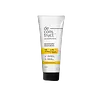What's inside
What's inside
 Key Ingredients
Key Ingredients

 Benefits
Benefits

 Concerns
Concerns

 Ingredients Side-by-side
Ingredients Side-by-side

Water
Skin ConditioningNiacinamide
SmoothingTranexamic Acid
AstringentKojic Acid
AntioxidantCetearyl Alcohol
EmollientDicetyl Phosphate
EmulsifyingCeteth-10 Phosphate
CleansingC12-15 Alkyl Benzoate
AntimicrobialAzelaic Acid
BufferingPolyglutamic Acid
Skin ConditioningBetaine
HumectantTrehalose
HumectantTrimethylolpropane Tricaprylate/Tricaprate
EmollientHydrolyzed Milk Protein
Skin ConditioningPhenylalanine
MaskingPantothenic Acid
Skin ConditioningAllantoin
Skin ConditioningOenothera Biennis Oil
EmollientSodium Lactate
BufferingMorus Alba Leaf Extract
Skin ConditioningHyaluronic Acid
HumectantStomach Extract
HumectantGlycyrrhiza Glabra Root Extract
BleachingPhenoxyethanol
PreservativeXanthan Gum
EmulsifyingBenzyl Alcohol
PerfumingGlyceryl Laurate
EmollientZea Mays Oil
EmulsifyingWater, Niacinamide, Tranexamic Acid, Kojic Acid, Cetearyl Alcohol, Dicetyl Phosphate, Ceteth-10 Phosphate, C12-15 Alkyl Benzoate, Azelaic Acid, Polyglutamic Acid, Betaine, Trehalose, Trimethylolpropane Tricaprylate/Tricaprate, Hydrolyzed Milk Protein, Phenylalanine, Pantothenic Acid, Allantoin, Oenothera Biennis Oil, Sodium Lactate, Morus Alba Leaf Extract, Hyaluronic Acid, Stomach Extract, Glycyrrhiza Glabra Root Extract, Phenoxyethanol, Xanthan Gum, Benzyl Alcohol, Glyceryl Laurate, Zea Mays Oil
Water
Skin ConditioningHydrogenated Olive Oil Unsaponifiables
EmollientHydrogenated Ethylhexyl Olivate
EmollientDibutyl Adipate
EmollientNiacinamide
Smoothing3-O-Ethyl Ascorbic Acid
Skin ConditioningPolyacrylate-13
Polyisobutene
Polysorbate 20
EmulsifyingGlycerin
HumectantDiheptyl Succinate
EmollientCapryloyl Glycerin/Sebacic Acid Copolymer
Skin ConditioningKojic Dipalmitate
EmollientPhenoxyethanol
PreservativeEthylhexylglycerin
Skin ConditioningC10-18 Triglycerides
EmollientSodium Acrylate/Sodium Acryloyldimethyl Taurate Copolymer
Emulsion StabilisingIsohexadecane
EmollientPolysorbate 80
EmulsifyingCitrus Junos Seed Extract
AntioxidantLactobacillus Ferment
Skin ConditioningScutellaria Baicalensis Root Extract
AstringentLactic Acid
BufferingTocopherol
AntioxidantSodium Gluconate
Skin ConditioningWater, Hydrogenated Olive Oil Unsaponifiables, Hydrogenated Ethylhexyl Olivate, Dibutyl Adipate, Niacinamide, 3-O-Ethyl Ascorbic Acid, Polyacrylate-13, Polyisobutene, Polysorbate 20, Glycerin, Diheptyl Succinate, Capryloyl Glycerin/Sebacic Acid Copolymer, Kojic Dipalmitate, Phenoxyethanol, Ethylhexylglycerin, C10-18 Triglycerides, Sodium Acrylate/Sodium Acryloyldimethyl Taurate Copolymer, Isohexadecane, Polysorbate 80, Citrus Junos Seed Extract, Lactobacillus Ferment, Scutellaria Baicalensis Root Extract, Lactic Acid, Tocopherol, Sodium Gluconate
 Reviews
Reviews

Ingredients Explained
These ingredients are found in both products.
Ingredients higher up in an ingredient list are typically present in a larger amount.
Niacinamide is a multitasking form of vitamin B3 that strengthens the skin barrier, reduces pores and dark spots, regulates oil, and improves signs of aging.
And the best part? It's gentle and well-tolerated by most skin types, including sensitive and reactive skin.
You might have heard of "niacin flush", or the reddening of skin that causes itchiness. Niacinamide has not been found to cause this.
In very rare cases, some individuals may not be able to tolerate niacinamide at all or experience an allergic reaction to it.
If you are experiencing flaking, irritation, and dryness with this ingredient, be sure to double check all your products as this ingredient can be found in all categories of skincare.
When incorporating niacinamide into your routine, look out for concentration amounts. Typically, 5% niacinamide provides benefits such as fading dark spots. However, if you have sensitive skin, it is better to begin with a smaller concentration.
When you apply niacinamide to your skin, your body converts it into nicotinamide adenine dinucleotide (NAD). NAD is an essential coenzyme that is already found in your cells as "fuel" and powers countless biological processes.
In your skin, NAD helps repair cell damage, produce new healthy cells, support collagen production, strengthen the skin barrier, and fight environmental stressors (like UV and pollution).
Our natural NAD levels start to decline with age, leading to slower skin repair, visible aging, and a weaker skin barrier. By providing your skin niacinamide, you're recharging your skin's NAD levels. This leads to stronger, healthier, and younger looking skin.
Another name for vitamin B3 is nicotinamide. This vitamin is water-soluble and our bodies don't store it. We obtain Vitamin B3 from either food or skincare. Meat, fish, wheat, yeast, and leafy greens contain vitamin B3.
The type of niacinamide used in skincare is synthetically created.
Learn more about NiacinamidePhenoxyethanol is a preservative that has germicide, antimicrobial, and aromatic properties. Studies show that phenoxyethanol can prevent microbial growth. By itself, it has a scent that is similar to that of a rose.
It's often used in formulations along with Caprylyl Glycol to preserve the shelf life of products.
Water. It's the most common cosmetic ingredient of all. You'll usually see it at the top of ingredient lists, meaning that it makes up the largest part of the product.
So why is it so popular? Water most often acts as a solvent - this means that it helps dissolve other ingredients into the formulation.
You'll also recognize water as that liquid we all need to stay alive. If you see this, drink a glass of water. Stay hydrated!
Learn more about Water